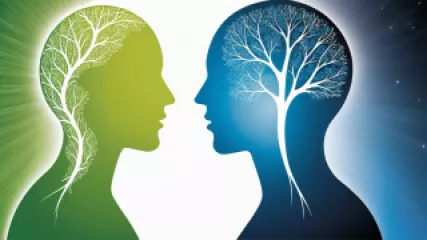What Are the Key Differences Between Philosophy and Psychology?
What Are the Key Differences Between Philosophy and Psychology?
The fields of philosophy and psychology have a long and intertwined history, with both disciplines exploring the nature of the human experience, the workings of the mind, and the fundamental questions of existence. However, despite these overlapping interests, there are distinct differences between the two fields that set them apart. In this article, we will delve into the key distinctions between philosophy and psychology, examining their unique approaches, methodologies, and areas of focus.
Defining Philosophy and Psychology
To begin, let's establish a clear understanding of what each field entails. Philosophy is the study of fundamental questions about reality, knowledge, values, reason, mind, and language. Philosophers seek to understand the world and the human condition through abstract reasoning, logical analysis, and critical examination of ideas. They grapple with questions such as "What is the meaning of life?", "How can we know what is true?", and "What is the nature of morality?"
Psychology, on the other hand, is the scientific study of the human mind and behavior. Psychologists employ empirical methods, such as experimentation, observation, and data analysis, to investigate various aspects of the human experience, including cognition, emotion, personality, and social interactions. Their primary aim is to understand, explain, and predict human behavior, as well as to develop effective strategies for promoting well-being and addressing mental health challenges.
Philosophical Inquiry vs. Empirical Investigation
One of the fundamental differences between philosophy and psychology lies in their approaches to understanding the world. Philosophy is primarily a deductive discipline, relying on logical reasoning and abstract theorizing to derive insights about the nature of reality, knowledge, and values. Philosophers often start with a set of premises or assumptions and then use logical arguments to draw conclusions about the topic at hand.
In contrast, psychology is an empirical science, focused on gathering and analyzing observable data to understand the human mind and behavior. Psychologists use scientific methods, such as experiments, surveys, and case studies, to collect and interpret data that can be used to test hypotheses and develop theories about human cognition, emotion, and social interactions.
Breadth of Inquiry vs. Specific Domains
Another key distinction between philosophy and psychology is the breadth of their respective inquiries. Philosophy is concerned with the most fundamental and far-reaching questions about the universe, the human condition, and the nature of knowledge and ethics. Philosophers explore a wide range of topics, including metaphysics, epistemology, ethics, political theory, and aesthetics, among others.
In contrast, psychology is typically focused on more specific domains of human experience, such as cognitive processes, personality traits, developmental stages, social dynamics, and mental health. While psychologists may draw insights from philosophical perspectives, their primary goal is to develop a deeper understanding of the mechanisms and patterns underlying human behavior, with the aim of applying this knowledge to improve the human condition.
Normative vs. Descriptive Approaches
A further distinction between philosophy and psychology lies in their normative and descriptive approaches. Philosophy often grapples with questions of what ought to be, engaging in normative reasoning about what is right, good, or just. Philosophers may explore ethical principles, theories of justice, and ideals of human flourishing, often drawing on abstract reasoning and moral intuitions.
Psychology, on the other hand, is primarily a descriptive discipline, focused on understanding and explaining what is – the actual patterns, processes, and mechanisms that govern human behavior and mental processes. While psychologists may consider the implications of their findings for normative questions, their primary aim is to develop a scientific understanding of the human mind and behavior, rather than to prescribe how people should think or act.
Philosophical Schools of Thought vs. Psychological Approaches
The field of philosophy is characterized by a rich diversity of schools of thought, each with its own set of assumptions, methodologies, and philosophical traditions. From ancient Greek philosophers like Plato and Aristotle to modern-day thinkers like Immanuel Kant, Michel Foucault, and Judith Butler, the history of philosophy is a tapestry of competing and complementary perspectives on the nature of reality, knowledge, and human existence.
Similarly, psychology encompasses a wide range of theoretical approaches and research methods, each with its own unique focus and assumptions. These include cognitive psychology, behavioral psychology, psychoanalytic theory, humanistic psychology, and many others. While these different psychological approaches may sometimes overlap or draw inspiration from philosophical ideas, they are ultimately distinct in their specific research questions, experimental methodologies, and practical applications.
The Interplay Between Philosophy and Psychology
Despite the clear distinctions between philosophy and psychology, the two fields have a long history of interaction and mutual influence. Many philosophers have incorporated psychological insights into their theories, and some psychologists have drawn on philosophical frameworks to inform their research and clinical practices.
For example, the existentialist philosophers, such as Jean-Paul Sartre and Simone de Beauvoir, were deeply influenced by the psychological concept of subjective experience and the role of individual agency in shaping one's life. Conversely, the phenomenological approach in psychology, pioneered by thinkers like Edmund Husserl and Maurice Merleau-Ponty, was heavily informed by philosophical ideas about the nature of consciousness and the lived experience of the human subject.
Furthermore, the field of philosophy of mind explores the relationship between the mind and the physical brain, drawing on both philosophical and psychological perspectives to understand the nature of consciousness, cognition, and mental states. Psychologists, in turn, have often relied on philosophical concepts, such as ethics and epistemology, to inform the design and interpretation of their research studies.
The Complementary Nature of Philosophy and Psychology
While philosophy and psychology have distinct methodologies and areas of focus, they can be seen as complementary disciplines that offer different but equally valuable insights into the human experience. Philosophy provides a broader, more abstract perspective on the fundamental questions of existence, knowledge, and values, while psychology offers a more empirical, scientific understanding of the mechanisms and patterns underlying human behavior and mental processes.
By engaging with both philosophical and psychological perspectives, we can gain a more holistic understanding of the human condition, with philosophy providing the conceptual frameworks and ethical considerations, and psychology contributing the empirical data and practical applications. This cross-pollination of ideas can lead to new and deeper insights, as well as more effective strategies for addressing the complex challenges faced by individuals and society.
Conclusion
In conclusion, while philosophy and psychology share a common interest in understanding the human experience, they are distinct disciplines with unique approaches, methodologies, and areas of focus. Philosophy is primarily a deductive, normative field that explores the most fundamental questions about reality, knowledge, and values, while psychology is an empirical, descriptive science that investigates the mechanisms and patterns underlying human behavior and mental processes.
However, the two fields are not entirely separate; they have a long history of interaction and mutual influence, with philosophers incorporating psychological insights into their theories and psychologists drawing on philosophical frameworks to inform their research and clinical practices. By recognizing the complementary nature of philosophy and psychology, we can gain a more comprehensive understanding of the human condition and develop more effective strategies for addressing the complex challenges we face as individuals and as a society.
In this article, we have delved into the key differences between philosophy and psychology, exploring their distinct approaches, methodologies, and areas of focus. We have discussed how philosophy is primarily a deductive, normative field that grapples with fundamental questions about reality, knowledge, and values, while psychology is an empirical, descriptive science that investigates the mechanisms and patterns underlying human behavior and mental processes.
Despite these differences, the two fields have a long history of interaction and mutual influence, with philosophers incorporating psychological insights into their theories and psychologists drawing on philosophical frameworks to inform their research and clinical practices. By recognizing the complementary nature of philosophy and psychology, we can gain a more holistic understanding of the human condition and develop more effective strategies for addressing the complex challenges we face.
As we continue to explore the relationship between these two disciplines, we may uncover new and deeper insights that can help us better understand ourselves, our place in the world, and the human experience as a whole. Whether you are drawn to the abstract reasoning of philosophy or the empirical rigor of psychology, engaging with both perspectives can lead to a richer and more nuanced understanding of the fundamental questions that have captivated thinkers for centuries.
Throughout this article, we have emphasized the importance of using semantic HTML tags to structure the content and enhance the overall reading experience. By incorporating elements like headings, italicized text, emphasized words,
quoted passages, and
horizontal rules, we have aimed to create a well-organized and visually appealing article that is easy to navigate and understand.
The strategic use of these HTML tags not only helps with the styling and presentation of the content but also serves to convey the logical flow and hierarchy of the information. For example, the
, , and tags have been used to clearly demarcate the main sections and subsections of the article, guiding the reader through the key points and ideas being explored.
tags have been used to clearly demarcate the main sections and subsections of the article, guiding the reader through the key points and ideas being explored.
Similarly, the and tags have been employed to add emphasis and nuance to certain words and phrases, while the and tags have been used to distinguish and properly attribute external sources that have been referenced within the text.
By leveraging the power of semantic HTML, we have not only crafted an engaging and informative article but also laid the groundwork for effective search engine optimization (SEO) and accessibility. The use of these tags helps search engines better understand the structure and content of the article, while also ensuring that the information is presented in a way that is easily navigable and comprehensible for all readers, including those with various accessibility needs.
In the end, the strategic use of semantic HTML tags is a crucial aspect of creating high-quality, well-structured content that can effectively communicate complex ideas and engage the reader on both an intellectual and a practical level. By embracing these best practices, we can ensure that our articles not only inform and inspire but also serve as valuable resources that are easy to access and understand.






